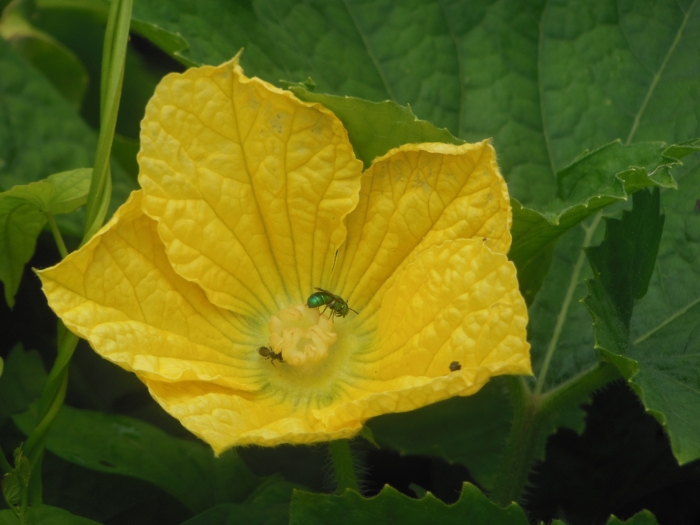Wax Gourd
(Benincasa hispida)
Wax Gourd (Benincasa hispida)
/
/

© quailboy
CC BY 4.0
Image By:
© quailboy
Recorded By:
Copyright:
CC BY 4.0
Copyright Notice:
Photo by: © quailboy | License Type: CC BY 4.0 | License URL: http://creativecommons.org/licenses/by/4.0/ | Uploader: quailboy | Publisher: iNaturalist |
























Estimated Native Range
Summary
Benincasa hispida, commonly known as wax gourd or winter melon, is an annual vine native to South and Southeast Asia, particularly found in warm, subtropical environments such as river valleys and lowland tropics. It can grow up to 15 feet (4.5 meters) in length and is characterized by its hairy stems and large, lobed leaves. The plant produces yellow flowers and is particularly noted for its large, elongated fruits, which can reach up to 40 inches (1 meter) in length. The fruits have a waxy coating that provides a long shelf life, and they are typically light green, maturing to a darker green.
Wax gourd is valued for its edible fruit, which is commonly used in Asian cuisines, particularly in soups, stews, and stir-fries. The flesh is crisp and mild in flavor when young, becoming increasingly sweet as it matures. In addition to culinary uses, the fruit is recognized for its medicinal properties in Ayurveda, where it is used to treat various ailments. Wax gourd requires a warm growing environment with full sun and benefits from well-drained loam and sandy soils. It needs constant irrigation during the growing season to support its rapid growth and fruit development. While generally easy to grow, it can be susceptible to powdery mildew and should be monitored for pests such as cucumber beetles.CC BY-SA 4.0
Wax gourd is valued for its edible fruit, which is commonly used in Asian cuisines, particularly in soups, stews, and stir-fries. The flesh is crisp and mild in flavor when young, becoming increasingly sweet as it matures. In addition to culinary uses, the fruit is recognized for its medicinal properties in Ayurveda, where it is used to treat various ailments. Wax gourd requires a warm growing environment with full sun and benefits from well-drained loam and sandy soils. It needs constant irrigation during the growing season to support its rapid growth and fruit development. While generally easy to grow, it can be susceptible to powdery mildew and should be monitored for pests such as cucumber beetles.CC BY-SA 4.0
Plant Description
- Plant Type: Herb, Vine
- Height: 1.5-2 feet
- Width: 5-15 feet
- Growth Rate: Moderate
- Flower Color: Yellow
- Flowering Season: Summer
- Leaf Retention:
Growth Requirements
- Sun: Full Sun
- Water: Medium
- Drainage: Medium
Common Uses
Edible*Disclaimer: Easyscape's listed plant edibility is for informational use. Always verify the safety and proper identification of any plant before consumption., Low Maintenance
Natural Habitat
Warm, subtropical environments such as river valleys and lowland tropics
Other Names
Common Names: Ash gourd, Winter melon, White gourd
Scientific Names: , Benincasa hispida, Benincasa cerifera, Benincasa cerifera f. emarginata, Benincasa cylindrica, Benincasa hispida var. chieh-qua, Benincasa hispida var. hispida, Benincasa pruriens f. hispida, Cucurbita alba, Cucurbita alba
GBIF Accepted Name: